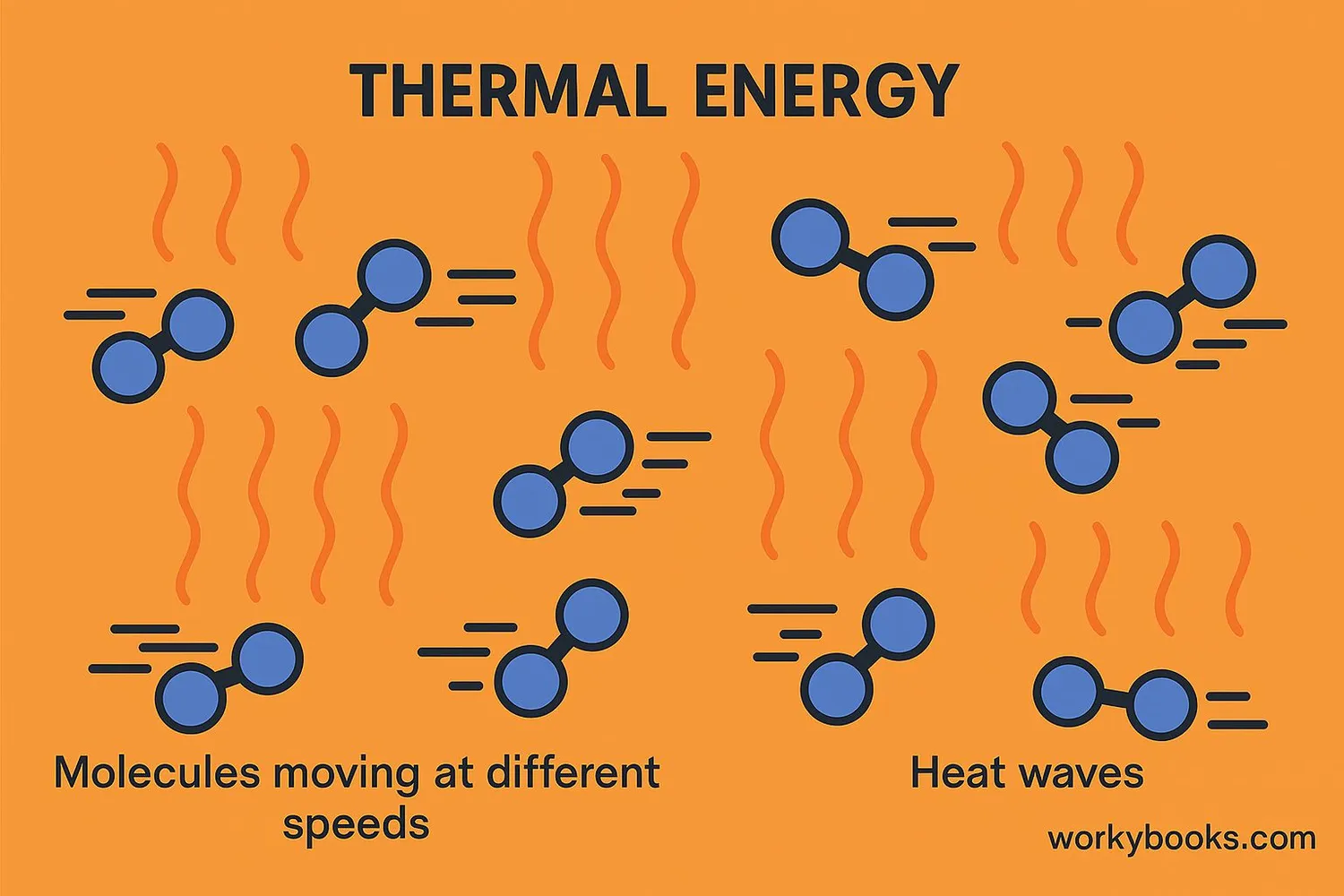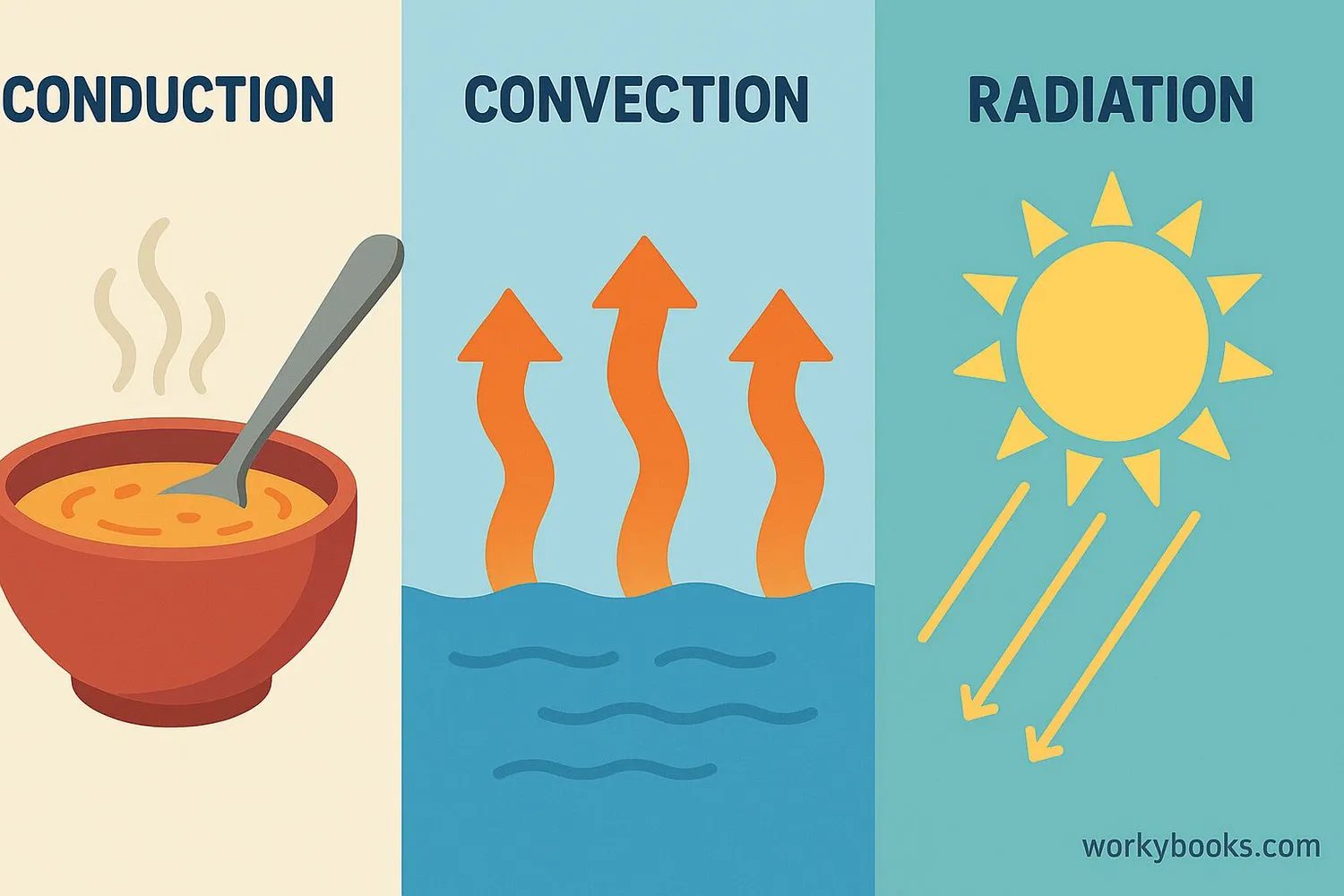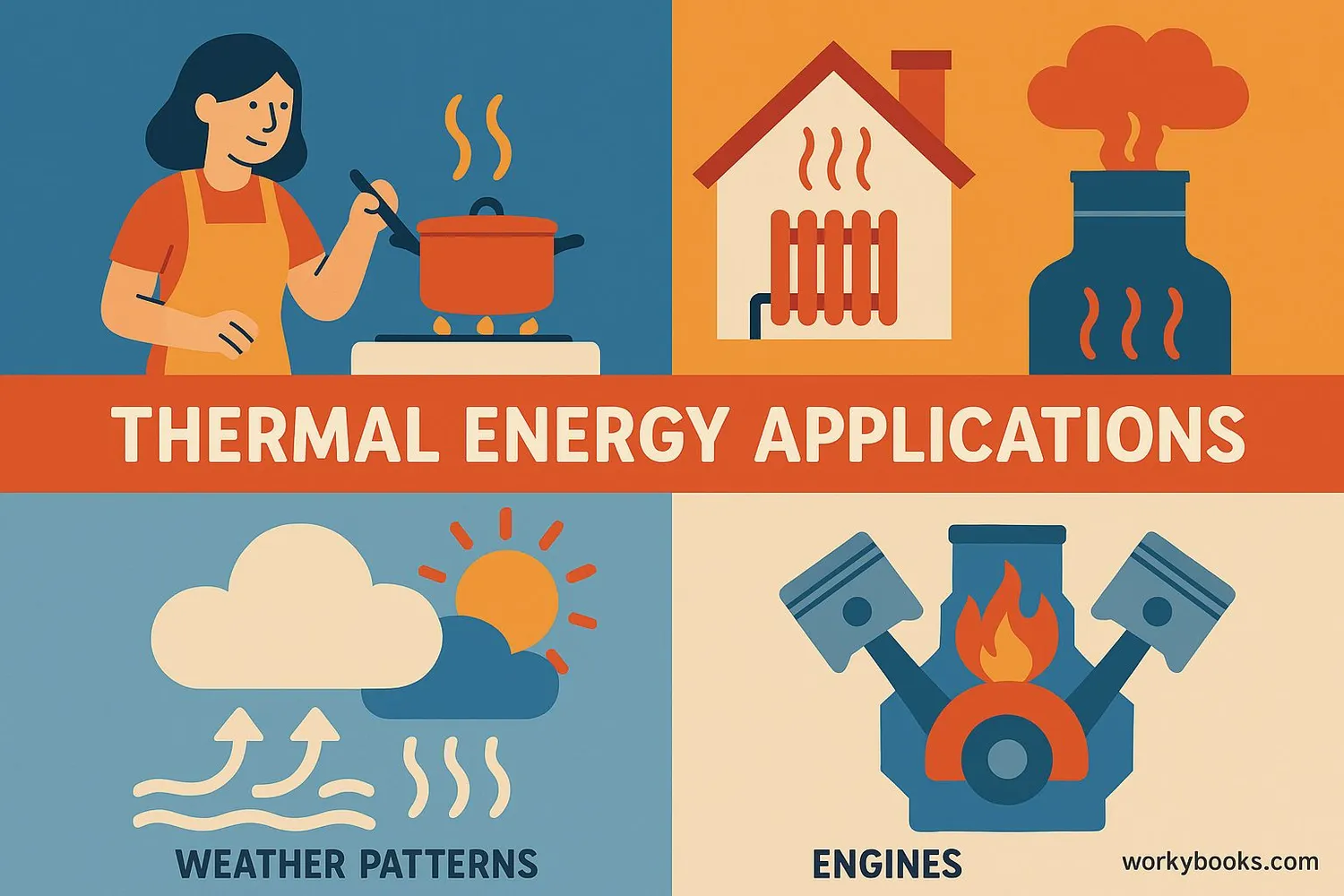Thermal Energy - Definition, Examples, Quiz, FAQ, Trivia
Discover how heat moves and transforms our world!
What is Thermal Energy?

Thermal energy is the energy that comes from heat! It's the total kinetic energy (movement energy) of all the particles (atoms and molecules) that make up a substance. When something feels hot, it's because its particles are moving very fast!
Here's what you need to know:
• Temperature measures how hot or cold something is
• Heat is the transfer of thermal energy from warmer objects to cooler ones
• The faster particles move, the more thermal energy they have
Science Fact!
All matter has thermal energy - even ice! The particles in ice are moving, just much slower than in hot water.
Particles
Everything is made of tiny moving particles
Movement
Faster movement = more thermal energy
Temperature
Measures average particle speed
Heat Transfer Methods

Heat can move in three different ways:
Conduction
Heat transfer through direct contact
Example: A spoon heating up in hot soup
Convection
Heat transfer through fluid movement
Example: Hot air rising and cool air sinking
Radiation
Heat transfer through electromagnetic waves
Example: Feeling warmth from the sun
Did You Know?
In space, heat can only transfer through radiation since there's no air for conduction or convection!
Why Thermal Energy Matters

Thermal energy is essential to our world! Here's why it's so important:
Weather Systems
Drives wind, ocean currents, and weather patterns
Heating & Cooling
Keeps our homes comfortable in all seasons
Transportation
Powers engines in cars, planes, and rockets
Thermal energy also explains:
• Why metal feels colder than wood at the same temperature
• How thermos bottles keep drinks hot or cold
• Why we wear layers of clothing in winter
• How animals like penguins stay warm in freezing climates
Thermal Energy Quiz
Test your understanding with these questions! Answer all 5 to see how much you've learned.
Frequently Asked Questions
Here are answers to common questions about thermal energy:
Thermal Energy Facts
Discover some amazing facts about thermal energy:
Temperature Extremes
The hottest natural temperature on Earth was 134°F (56.7°C) in Death Valley, while the coldest was -128.6°F (-89.2°C) in Antarctica!
Animal Insulation
Arctic foxes can survive in temperatures as low as -94°F (-70°C) because their fur provides excellent insulation against heat loss!
Solar Heat
The sun's core reaches 27 million°F (15 million°C)! It takes about 8 minutes for this thermal energy to reach Earth as radiation.
Engineering Marvel
Space shuttle tiles could withstand 2,300°F (1,260°C) on the outside while keeping the inside at room temperature!


